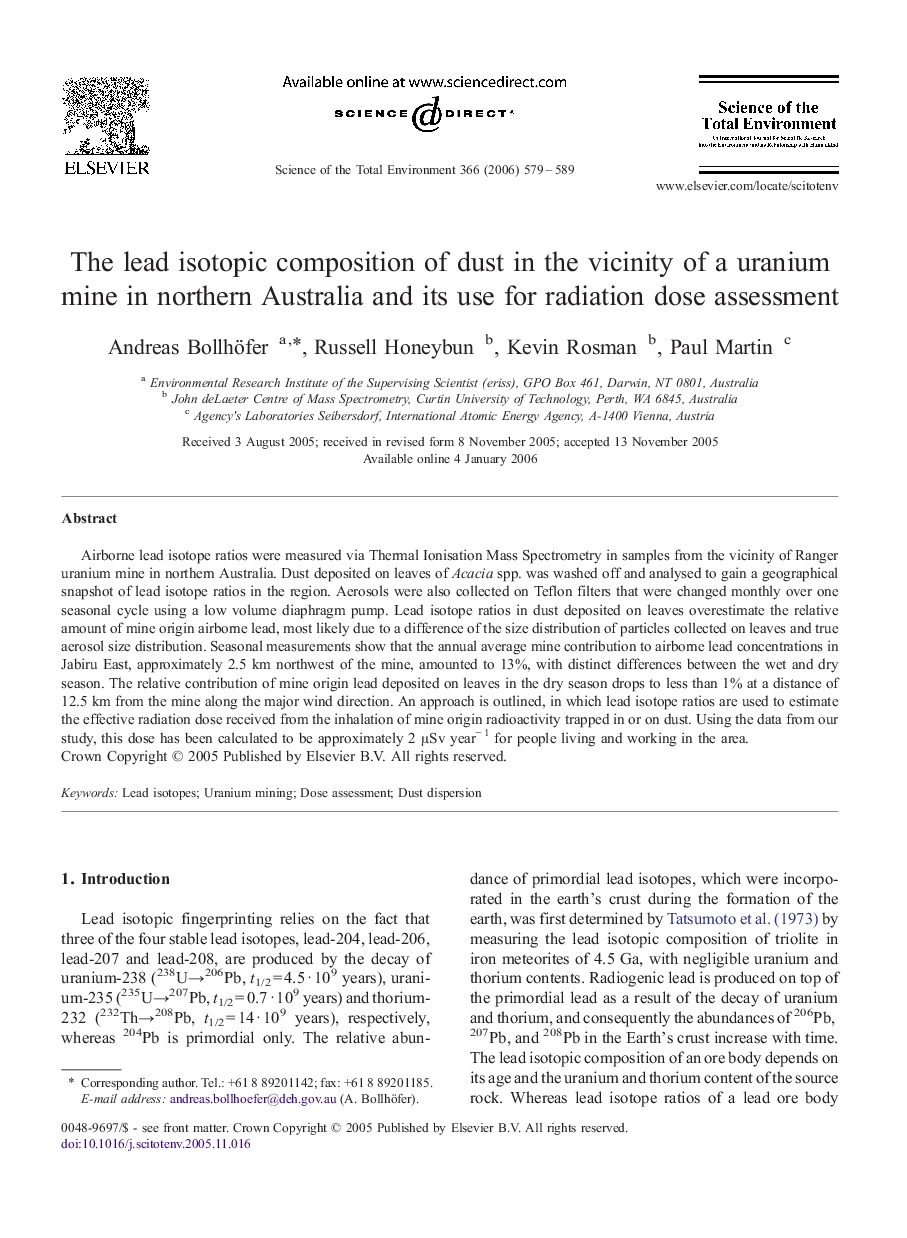| کد مقاله | کد نشریه | سال انتشار | مقاله انگلیسی | نسخه تمام متن |
|---|---|---|---|---|
| 4434114 | 1619971 | 2006 | 11 صفحه PDF | دانلود رایگان |

Airborne lead isotope ratios were measured via Thermal Ionisation Mass Spectrometry in samples from the vicinity of Ranger uranium mine in northern Australia. Dust deposited on leaves of Acacia spp. was washed off and analysed to gain a geographical snapshot of lead isotope ratios in the region. Aerosols were also collected on Teflon filters that were changed monthly over one seasonal cycle using a low volume diaphragm pump. Lead isotope ratios in dust deposited on leaves overestimate the relative amount of mine origin airborne lead, most likely due to a difference of the size distribution of particles collected on leaves and true aerosol size distribution. Seasonal measurements show that the annual average mine contribution to airborne lead concentrations in Jabiru East, approximately 2.5 km northwest of the mine, amounted to 13%, with distinct differences between the wet and dry season. The relative contribution of mine origin lead deposited on leaves in the dry season drops to less than 1% at a distance of 12.5 km from the mine along the major wind direction. An approach is outlined, in which lead isotope ratios are used to estimate the effective radiation dose received from the inhalation of mine origin radioactivity trapped in or on dust. Using the data from our study, this dose has been calculated to be approximately 2 μSv year− 1 for people living and working in the area.
Journal: Science of The Total Environment - Volume 366, Issues 2–3, 1 August 2006, Pages 579–589